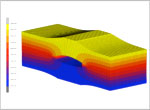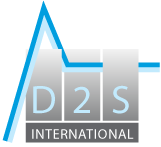Marc & Mentat
Advanced Nonlinear Simulation
Finite element analysis (FEA) has become a critical part of the product development process, but most FEA programs are limited to solving within the limits of linear material properties and displacements, small strains, and small rotations. Many software providers claim to have nonlinear capabilities, but few are able to consistently and reliably solve problems involving changing contact conditions between components and/or large strain (plasticity or elastomeric behavior, for example). When the going gets tough, even some of the most highly regarded nonlinear-focused FEA solvers turn to explicit dynamics and “tricks” (like mass scaling) that change the physics of problems and compromise solution accuracy. Because of these limitations, there are many aspects of product behavior that are not well understood until physical prototypes are available. This leads to late and expensive design changes, product failure in the field, and sometimes, safety issues.
Marc has no such limitations. Built from its first day to solve nonlinear problems, Marc and Mentat use advanced mathematics and FE technology to consistently obtain converged solutions for highly nonlinear problems involving nonlinear materials, large strain and displacement, and contact. Marc also incorporates serious multiphysics capabilities, enabling engineers to simulate situations involving coupling between structures, thermal, fluid, acoustics, electrical, and magnetics.



Marc provides the most robust, and easiest to use contact capability of any FEA software available. No need for gap elements or artificial concepts like “slide lines” and “penalty stiffness” – simply define your components as potential bodies in contact and let Marc do the rest. Even self-contact for bodies that deform enough to fold over upon themselves is handled easily. Marc also accurately accounts for the effects of friction—critical for analyzing nonlinear behavior in many applications including tool-and-die set-up, spring coil clash, or a windshield wiper system.

Whether you are designing with glass, rubber, steel, or concrete, Marc offers an extensive library of metallic and non-metallic material models, along with a library of 175 elements for structural, thermal, and fluid analysis. Elastomeric materials can be represented with popular material laws including Mooney-Rivlin, Boyce-Arruda, and YYY using Mentat’s built-in curve fitting that computes coefficients from stress/strain data. Multiple models are also provided for plastic behavior, and specialized element types automatically address numerical issues like hourglassing to get converged, accurate solutions to large strain problems.

When large strain distorts elements, or changing contact conditions make a finite element mesh inappropriate to capture true contact with other components or bodies, Marc automatically remeshes within time steps of the solution to ensure that the solution converges on an accurate solution. Some of the most difficult nonlinear problems in the world have been successfully solved with Marc and adaptive meshing, including oil packer seals, wire crimping, and elastomeric seals.

Multiphysics for more reality, less approximation
Increased reliance on simulation in design and development necessitates consideration of all the applicable physics to ensure accuracy of the model. While single physics models have long been used to tackle these problems, the disconnected manner the various physics are handled could lead to errors in response prediction and thus lead to inefficient designs. Often, influence of non-structural physics phenomena on structural behavior is required. Heating of an electric wire and its influence on adjacent structure’s deformation, microelectronic mechanical systems (MEMS) are just a few examples where the coupling comes into play.
The multiphysics capabilities of Marc, when used with superior nonlinear structural analysis capabilities, provides more accurate results leading to better and improved designs of your structural systems. Marc can be used to couple structures, thermal, fluid (laminar, small deformation), magnetostatics, electrostatic, electromagnetic. The coupling capabilities are also highly useful in accuracy of manufacturing simulations like welding, curing, and forming.

Parallel systems and multi-core systems are quite common these days. Long before they have become commonplace, Marc’s researchers invested time and resources in parallelizing Marc. Marc’s parallel analysis capabilities have been available for nearly 15 years and are field tested quite extensively. While most solvers focus on parallelizing only one aspect of solution (namely, matrix solution), Marc parallelizes all the steps of analysis (assembly, matrix solution and stress recovery). This enables you to get more out of your hardware.

Success in simulation of a manufacturing process is governed by a product’s strength in nonlinear analysis capabilities and multiphysics, especially thermal-structural coupling. Marc’s superior nonlinear solution aided by its ease and robustness of contact and automatic remeshing make it an ideal solution for simulating manufacturing processes like various forming operations, forging, welding, quenching and curing

Integrated pre/post processing makes nonlinear FEA easy
You can drive Marc capabilities through the common GUI offered by Patran or Marc Mentat, two pre- and post processors that work with Marc. Mentat also provides the unique ability to process large problems in parallel using the domain decomposition technique. Loading conditions can originate from physical tests or virtual tests using Adams. AFEA is a bundled version of Patran and Marc.
Request information
D2S International offers consultancy services using finite element software from HEXAGON (MSC Software).
